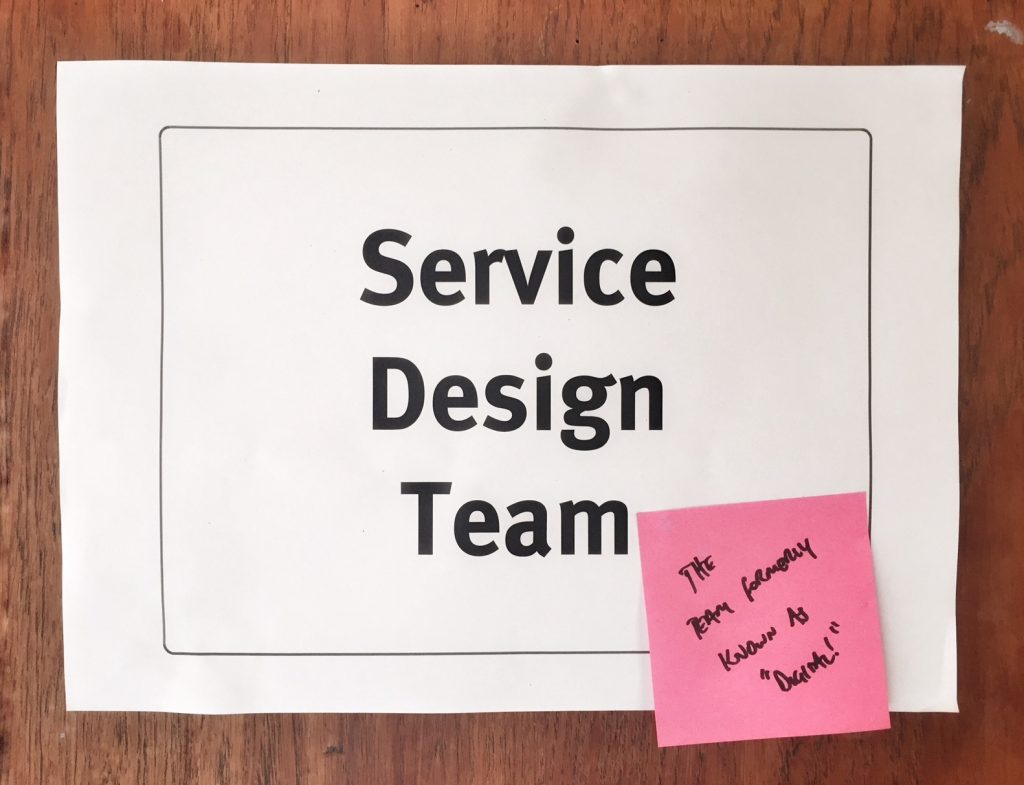
You may have noticed that the way we describe our team and the work that we do has changed. In the first phase of Essex County Council’s Organisation Design (OD) programme the Corporate Development function was created, and in it a new Digital team, to lead on the design of modern public services for the digital age. With the arrival of Executive Director Jason Kitcat the Digital team has evolved into the Service Design team, working alongside our Delivery team in the new Delivery and Service Design directorate. This post talks about why we’ve changed the way we describe our team and the work we do.
The problem with the word ‘digital’
One of the main issues we’ve had with having a ‘digital’ team is that it suggests that designing and building online services is the responsibility of a select group of people in a corner of the organisation. We also found that colleagues found it hard to understand what ‘digital’ really meant: can you ‘be digital’ or ‘think digital’? Digital is also often confused with conversations around just technology and computer systems. This creates uncertainty, and makes it hard for people to think about how they address the necessary modernisation (not just ‘digitisation’) of their services.
Over the past few years we’ve learned that successful modern services are about much more than just the online elements. Tom Loosemore’s popular definition for digital highlights the broader thinking required to design digital services that really work. This includes consideration for the ways that both the people who use our services and the people that deliver them think and act, how organisations like Essex County Council and our partners organise our people and resources, the business models that underpin how services are funded and the technology that services are built around. We firmly endorse Tom’s definition of digital, but we believe we can carry the flame without always labelling our work as ‘digital’.
Digital is everyone’s responsibility
It’s clear that the development of user-centred modern services is everyone's responsibility. From the leadership of our organisations, to front-line professionals and corporate support teams, everyone has essential skills, knowledge and experience that together will enable us to improve our services. Digital and design professionals can inspire, nurture and lead the thinking, especially around the more technical elements, but we should always work to help embed these ways of working throughout the organisation.
So now we focus on ‘service design’ - the design of end-to-end services that help people to achieve their goals. Good service design requires a deep understanding of how and why people use our services, and an open-minded view on how we organise ourselves to most effectively meet their needs. Service design is both a skillset and a mindset, and whilst some of the techniques need specialist skills, many can be easily learned and applied everywhere. We’ll talk more about our ways of working and include some specific examples in future posts. You are also welcome to join our fortnightly show-and-tell sessions where we share and discuss our latest work-in-progress, just drop us a line on and we’ll send you an invitation.
So the name of the team has changed, but the principles for how we work haven’t. We still aim to exemplify ‘The Essex Way’, and work in partnership with service users and service teams to support the delivery of our strategic aims with robust, efficient and effective modern services.
1 comment
Comment by john mortimer posted on
Good insight, and I hope that public sector services around the country do not fall into he trap that Digital means putting in some IT workflow. Service design allows for the real workflows to be redefined and optimised - stripping out waste. It also allows for the variability of the demands and what matters to people to be incorporated. Much work councils do is around those in need and in complex situations - traditional digital solutions cannot come well with this.